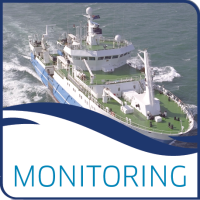The National Performance Framework Clean Seas Indicator 2016 is the percentage of assessments of metals, polycyclic aromatic hydrocarbons (PAHs) and polychlorinated biphenyls (PCBs) in biota and sediment showing concencentrations that are unlikely to harm marine organisms in Scottish waters. The Indicator is based on a series of regional assessments in which the mean concentration of each contaminant is compared to the Environmental Assessment Criteria (EAC) or an equivalent threshold when the EAC has not been established. The regional assessments are themselves based on the 2016 assessment of the UK's Clean Seas Environment Monitoring Programme (CSEMP).
Data and Resources
- Biota data 1999-2015 used for the National Performance Framework Clean Seas Indicator 2016csv
The variables in biota_data.csv describe the contaminant data in biota used...
Preview Download - Biota stations 1999-2015 used for the National Performance Framework Clean Seas Indicator 2016 csv
The variables in biota_stations.csv describe the biota monitoring stations...
Preview Download - Biota summaries 1999-2015 used for the National Performance Framework Clean Seas Indicator 2016 csv
The variables in biota_summaries.csv describe summary measures of status and...
Preview Download - Sediment data 1999-2015 used for the National Performance Framework Clean Seas Indicator 2016 csv
The variables in sediment_data.csv describe the contaminant data in sediment...
Preview Download - Sediment stations used for the National Performance Framework Clean Seas Indicator 2016 csv
The variables in sediment_stations.csv describe the sediment monitoring...
Preview Download - Sediment summaries used for the National Performance Framework Clean Seas Indicator 2016 csv
The variables in sediment_summaries.csv describe summary measures of status...
Preview Download
| Field | Value |
|---|---|
| Publisher | |
| Modified | 2020-07-20 |
| Release Date | 2019-04-16 |
| Identifier | aad7a9b5-2df1-40ff-9f98-76bf95ed33b1 |
| Spatial / Geographical Coverage Location | Scotland |
| Temporal Coverage | 1999-01-01 to 2016-12-31 |
| License | UK Open Government Licence (OGL) |
| Author | |
| Data Dictionary | Data are submitted to the MERMAN database by relevant UK Competent Monitoring Authorities. A series of templates are populated by submitting officers and submitted to the database which has in-built data restrictions and a data filter to ensure high quality, accurate data are submitted. The data filter has formulae in-built which use Accredited Quality Control information from known standards, limits, standard deviations and/or inter laboratory calibration exercises to calculate a score. Only data that pass a threshold agreed with the national advisory bodies are used for assessments. The data for 1999 - 2015 were extracted from MERMAN on 19 October 2016. Further data checks were made and records with obvious errors were deleted or corrected. The concentration and biological effects data were standardised to agreed units and bases and, in the case of sediment, were normalised to 5% aluminium (metals) and 2.5% organic carbon (organics). The data were grouped into time series, typically of a single contaminant in a single species at a single monitoring station. Time series with no data for the period 2010 - 2015 were excluded. These timeseries were then assessed for status and trends using the methods described at https://www.bodc.ac.uk/projects/data_management/uk/merman/assessments_an.... The results for the 2016 CSEMP assessment can be found at the same location. The National Performance Framework Clean Seas Indicator is constructed by selecting the timeseries in Scottish waters and making regional assessments of the concentrations of cadmium, lead, mercury, PAHs and PCBs in biota and sediment in four regions: the Northern North Sea, Scottish Continental Shelf, Minches and Western Scotland and Irish Sea (Clyde & Solway). For each contaminant or contaminant group, region, and biota / sediment, the mean concentration is compared to the EAC (or an equivalent threshold when the EAC has not been established). The Indicator is the proportion of these comparisons in which the mean concentration is significantly below the threshold. The results and the methods behind them can be found at http://marine.gov.scot/datafiles/npf/clean_seas/2016/Clean_Seas_Indicato... and the links within. The data archived here are the raw data for the timeseries in Scottish waters of selected metals, PAHs and PCBs. The summary measures of trend and status from each timeseries that form the input to the regional assessments are also archived. |
| Contact Name | Marine Scotland Science |
| Contact Email | |
| Public Access Level | Public |


